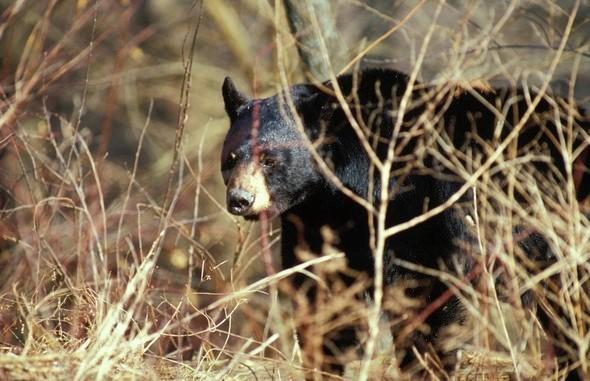
Xplor reconnects kids to nature and helps them find adventure in their own backyard. Free to residents of Missouri.


































Stay in Touch with MDC news, newsletters, events, and manage your subscription

Xplor reconnects kids to nature and helps them find adventure in their own backyard. Free to residents of Missouri.

A monthly publication about conservation in Missouri. Started in 1938, the printed magazine is free to residents of Missouri.


St. LOUIS, Mo.— The Missouri Department of Conservation (MDC) reminds St. Louis region residents that spring and early summer is the time when bears are on the move. It’s common for MDC to receive reports of bears in counties like Jefferson, Franklin, Washington, and Crawford. However, it was just over a year ago when a male black bear wandered through St. Louis County and into Richmond Heights, were MDC biologists immobilized and safely relocated the bear to an area of suitable bear habitat outside the urban corridor.
Incidents like this remind us that black bears are becoming a growing part of the St. Louis regional landscape, even at times in highly populated areas.
MDC’s ongoing bear research indicates the Show-Me-State is currently home to around 800 black bears, and that population is growing by 8% each year. Only one species can be found in this state—the American black bear—though multiple color phases can be found in Missouri other than black, such that a bear’s fur can be brown, red, or cinnamon in color.
Most of our bears are found in the southern part Missouri, according to MDC wildlife biologists, which is where the largest tracts of forested habitat are.
However, research also shows the population is expanding, both in total numbers and range, which might explain the uptick in sightings in recent years. As the population grows and expands, bears are showing up in areas further north. Additionally, late spring/ early summer is prime time for bears to be on the move. Young bears begin to wander seeking food and new areas to settle and adult males begin moving large distances in search of females.
These creatures are part of our state’s natural history, and many people enjoy the thought of seeing one of these impressive animals. With an expanding population of bears, however, comes an increased potential of human-bear interactions.
While generally not aggressive, like any wild animal black bears are driven to find food. It takes a lot of calories to fuel an animal that typically weighs several hundred pounds, and they can be attracted to a variety of food sources this time of year.
As bears emerge from hibernation in spring, they’re especially hungry.
Food, or rather the lack of it, is key to avoiding conflicts with bears. The last thing homeowners should do is tempt them with any sort of food source, whether it be intentionally or unintentionally. Feeding bears can be dangerous as it makes the bears comfortable around people. It can also lead bears to cause significant damage to property while searching for a meal.
A bear that becomes accustomed to obtaining food from humans can become a problem which could result in an increased number of encounters, property damage, bold behavior, and ultimately the euthanizing of the bear. These types of situations can be prevented by ensuring bears don’t have access to easy foods.
Despite their primary concentration in the Ozarks, sightings and potential encounters with bears are likely to increase in the St. Louis region as the bear population continues to grow.
MDC suggests the following tips to avoid issues if a bear has been sighted in the area.
These measures will also reduce problems with more common critters like raccoons and coyotes.
While black bears are generally a shy, non-aggressive species and bear attacks are rare throughout their range in North America, MDC offers these tips to stay safe when hiking and camping in bear country:
With a few sensible measures, it’s possible to welcome back Missouri’s black bears as our neighbors in the wild, without inviting them to the dinner table.
For more on black bears in Missouri, go to mdc.mo.gov/bearaware. Report bear sightings and submit photos online at mdc.mo.gov/reportbears.
In addition to directly educating Missourians on how to Be Bear Aware about black bears in the state, MDC is also affiliated with the BearWise® program. BearWise is a multi-state education effort developed by black bear biologists and supported by state wildlife agencies, such as MDC, that provides sound information and smart solutions that help people, neighborhoods, and communities prevent problems with black bears and keep bears wild. BearWise shares ways to prevent conflicts, provides resources to resolve problems, and encourages community initiatives to keep bears wild. Learn more at BearWise.org.